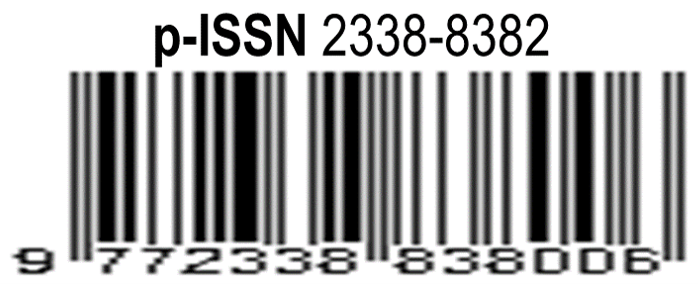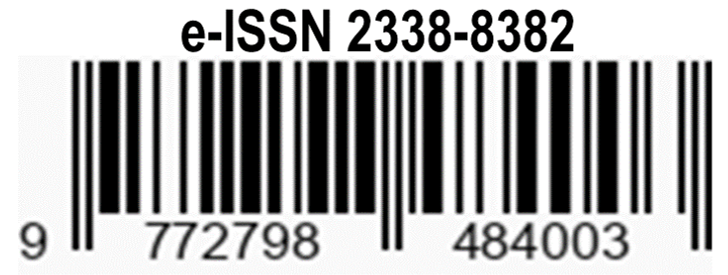Strategi Komunikasi Synchronous-Asynchronous Guru Sekolah Dasar dalam Pembelajaran Daring Pandemi COVID-19
Abstract
Teacher communication is one of the determinants of the effectiveness on bold learning during the COVID-19 pandemic. In bold learning, the teacher designs learning through two types according to the application/learning platform used. Thus, this study analyzes the teacher's synchronous and asynchronous strategies in the learning applications used. The subjects of this study were teachers of SD Negeri 1 and 7 Kediri, Tabanan which consisted of 4 (four) 4th, 5th, and 6th grade teachers on social studies material which was carried out randomly. Teachers of SD Negeri 1 & 7 Kediri Tabanan. The instruments used are observation sheets and interview lists. The results obtained are the establishment of synchronous and asynchronous communication according to the learning context and student conditions through the selection of appropriate learning platform applications. Communication strategies are built to streamline online learning so that online learning can motivate teachers and students.
References
Ari, N. K. N. (2013). STRATEGI KOMUNIKASI GURU DALAM PEMBELAJARAN BAHASA INDONESIA DI KELAS 1 SD LAB. UNDIKSHA. JURUSAN PENDIDIKAN BAHASA DAN SASTRA INDONESIA FAKULTAS BAHASA DAN SENI UNIVERSITAS PENDIDIKAN GANESHA SINGARAJA, 0–15.
Fahmi, M. H. (2020). KOMUNIKASI SYNCHRONOUS DAN ASYNCHRONOUS DALAM E-LEARNING PADA MASA PANDEMIC COVID-19. Jurnal Nomosleca, 6(April), 68–76.
Ginting, D., . F., Barella, Y., Linarsih, A., & Hamdani, B. (2021). Foreign Language Students’ Voices on Blended Learning and Fully Online Classes during the COVID-19 Pandemic. World Journal of English Language, 11(2), 62. https://doi.org/10.5430/wjel.v11n2p62
Maatuk, A. M., Elberkawi, E. K., Aljawarneh, S., Rashaideh, H., & Alharbi, H. (2021). The COVID-19 pandemic and E-learning: challenges and opportunities from the perspective of students and instructors. Journal of Computing in Higher Education, 0123456789. https://doi.org/10.1007/s12528-021-09274-2
Malyana, A. (2020). Pelaksanaan Pembelajaran Daring dan Luring Dengan Metode Bimbingan Berkelanjutan Pada Guru Sekolah Dasar Di Teluk Betung Utara Bandar Lampung. Jurnal Ilmiah Pendidikan Dasar Indonesia, 2(1), 67–76.
Platto, S., Wang, Y., Zhou, J., & Carafoli, E. (2021). History of the COVID-19 pandemic: Origin, explosion, worldwide spreading. Biochemical and Biophysical Research Communications, 538, 14–23. https://doi.org/https://doi.org/10.1016/j.bbrc.2020.10.087
Purandina, I. P. Y. (2020a). “New Normal”: It’s Time to Become More Independent in Developing Soft Skills and Character Education in Higher Education Level (Indonesian Context). In NEW NORMAL: IDEALISM AND IMPLEMENTATION IN INDONESIA AND THE PHILIPPINES (pp. 103–113). Jayapangus Press. http://jayapanguspress.penerbit.org/index.php/JPB/article/view/468/463
Purandina, I. P. Y. (2020b). THE USE OF ENGLISH CLASSROOM GREETING AND CHARACTER BUILDING IN TK PELITA SARI DESA MAMBANG TABANAN. Jurnal Pendidikan Bahasa Inggris Indonesia, 8(2), 12–19. https://doi.org/10.23887/jpbi.v8i2.3495
Purandina, I. P. Y. (2021). Whatsapp Sebagai Solusi Keterbatasan Guru Dengan Anak Didik Pada Saat Pandemi Covid-19 Di TK Tunas Mekar Desa Tegaljadi. Widyacarya Jurnal Pendidikan, Agama & Budaya, 5(1), 1–11.
Rachmawati, R., Choirunnisa, U., Pambagyo, Z. A., Syarafina, Y. A., & Ghiffari, R. A. (2021). Work from Home and the Use of ICT during the COVID-19 Pandemic in Indonesia and Its Impact on Cities in the Future. In Sustainability (Vol. 13, Issue 12). https://doi.org/10.3390/su13126760
Rulandari, N. (2020). The Impact of the Covid-19 Pandemic on the World of Education in Indonesia. Ilomata International Journal of Social Science, 1(4), 242–250. https://doi.org/10.52728/ijss.v1i4.174
Sadjail-salapuddin, R. Y. (2021). Parent Awareness and Behavioral Changes on Modular Assistance for their Children ’ s Education. 4(9), 30–33.
Saxena, S. K. (2020). Coronavirus Diseas 2019 (COVID-19): Epidemoogy, Pathogenis, Diagnosis, and Therapeutics.
Weisberger, M., Grinshtain, Y., & Blau, I. (2021). How do technological changes in formal education shape the social roles of teachers who are mothers? Teaching and Teacher Education, 103, 103344. https://doi.org/https://doi.org/10.1016/j.tate.2021.103344
Zweigbergk, M. von. (2021). Emergency Distance Teaching during the first year of the Covid-19 pandemic: Narratives from upper secondary school teachers in Sweden. https://www.diva-portal.org/smash/record.jsf?pid=diva2:1564535

This work is licensed under a Creative Commons Attribution-ShareAlike 4.0 International License.





.png)


.png)






